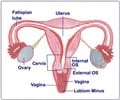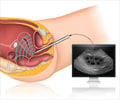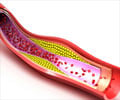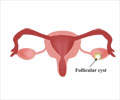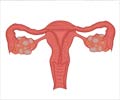Polycystic Ovarian Syndrome - Diagnosis
History and the Clinical picture along with an ultrasound of the ovaries can confirm the diagnosis of Polycystic ovaries.
The clinical picture is readily apparent from the history and physical findings. The diagnosis is based on the presence of some or all of the common clinical features and is confirmed by the presence of biochemical or radiologic evidence of endocrine abnormality and the exclusion of other etiologies.
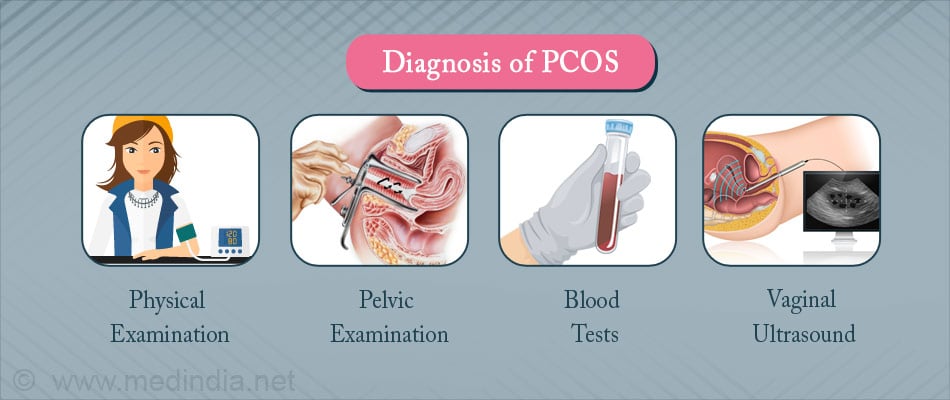
Many investigations are indicated depending on the presenting clinical picture. For diagnosis, an ultrasound of the pelvis with serum LH (luteinizing hormone - raised above 10 IU/l) and FSH level (low) is usually undertaken.
A. Radiology
- Pelvic Ultrasonography - Bilaterally enlarged cystic ovaries with more than eight follicles per ovary, with the follicles less than 10 mm in diameter. These ultrasound findings are present in more than 90 percent of women with polycystic ovary syndrome. Typically, the multiple follicles resemble a "pearl necklace" on ultrasound examination. Transvaginal approach has allowed better delineation of multiple follicular cysts.
- Urine human chorionic gonadotropin level - should be measured to exclude pregnancy in any woman of reproductive age who has menstrual irregularities or its absence.
- Testosterone (free) levels – To establish the diagnosis and monitor therapy.
- Dehydroepiandrosterone sulfate (DHEAS) and androstenedione – To exclude androgen-secreting neoplasms and to establish diagnosis.
- Fasting insulin – To exclude hyperinsulinemia.
- Serum Prolactin –To Exclude hyperprolactinemia
- Serum TSH – To exclude thyroid dysfunction.
C. Blood Sugar & Lipid Level Test
- Fasting glucose - Exclude type 2 diabetes or glucose intolerance
- Ratio of fasting levels of glucose to insulin - When less than 4.5, this ratio has a significant correlation with insulin resistance and has been studied for use as a screening test in obese patients with PCOS.
- Total, HDL, and LDL cholesterol levels as well as triglyceride levels - to help in planning and follow-up of recommended dietary modifications to reduce obesity and cardiovascular risk.
D. Biopsy
- Endometrial biopsy - is helpful to rule out endometrial hyperplasia in patients with prolonged amenorrhoea




